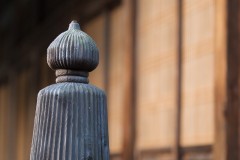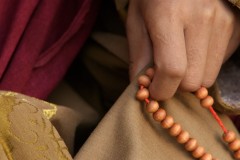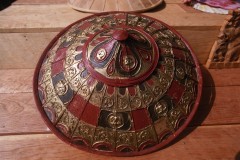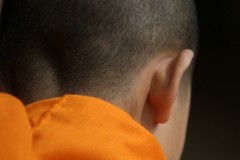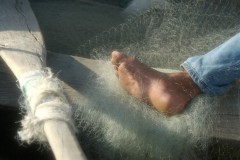We have already looked at the first element of design, line, which is the foundation for all the elements. We have also examined what happens when you enclose a line and get the second element of design, shape. The third element of design brings us into the world of three dimensions and is called form.
When an image has depth or appears to have three dimensions, then we say it has form. The first two elements of design, line and shape, can be captured without showing three dimensions. However, when we want to show form, we must show three dimensions. To do this, light and the direction of that light is extremely important.

What type of light do we need? Form is best captured when the light source is to one side (usually the left or the right) of the photographer because the side-lighting helps to wrap around your subject. The shadows created by this side lighting help to reveal the three-dimensional qualities of your subject.
Remember, to capture the three-dimensional quality of an object, the object must actually have three dimensions. You can’t show form in an image of a plain featureless wall!

The strong side lighting creates shadows which help to show the three dimensions of this gong.
You don’t need to have strong direct light hitting your subject to show three dimensions. The light can be diffused like on a cloudy day as long as the direction of the light is to one side of the subject in relation to your position with your camera.

There is no light directly hitting this teapot. However, the diffused light still creates shadows which helps to show form in the image and allows the viewer to see the three dimensionality of the object.
Light in the middle of the day is technically directional as it is coming from overhead. However, this type of light is often harsh and because it is coming from overhead is not flattering. When we capture an image of a person’s face, we want the light to be coming from one side. Light that comes from directly overhead creates shadows under their nose and chin and doesn’t make them look good. Even if your subject is not a person, this type of light rarely makes your subject look better.
Workshop: The Elements of Design – Part 3 – Recognizing and Capturing Form
Go out either earlier or later in the day when the sun is not directly overhead is there is side lighting. Your subject doesn’t have to be in direct sunlight but the light does need to be coming from one side. Move around and position yourself so the light strikes your subject from the side (side-lighting).
This is a workshop you can do on a cloudy day but be aware of where the light is coming form. You can use any lens but a telephoto lens will make it easy to isolate your subject.



